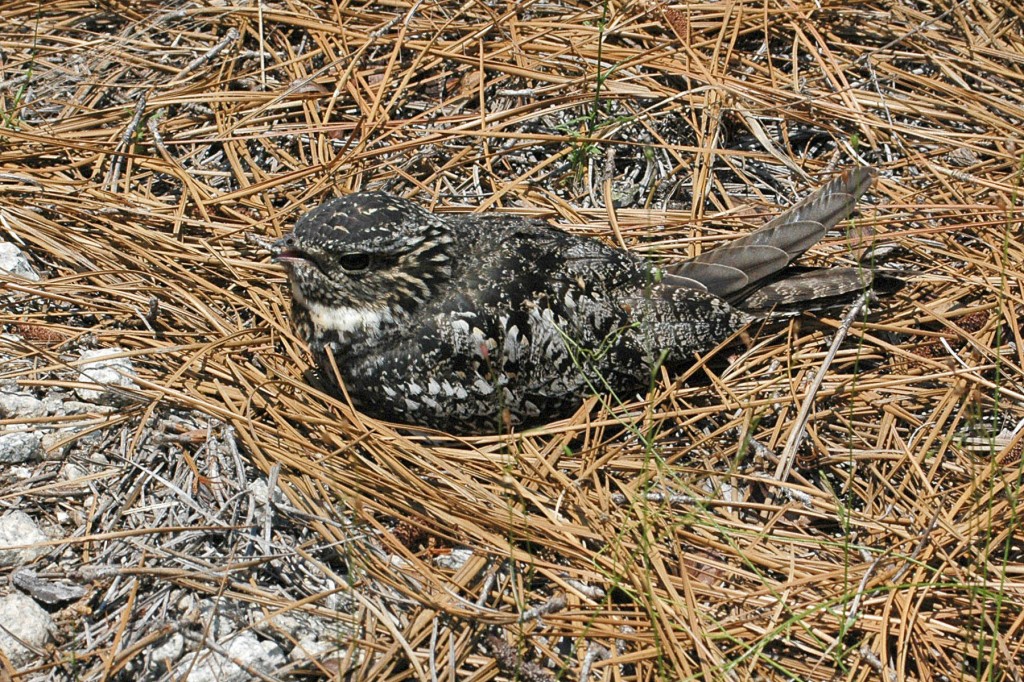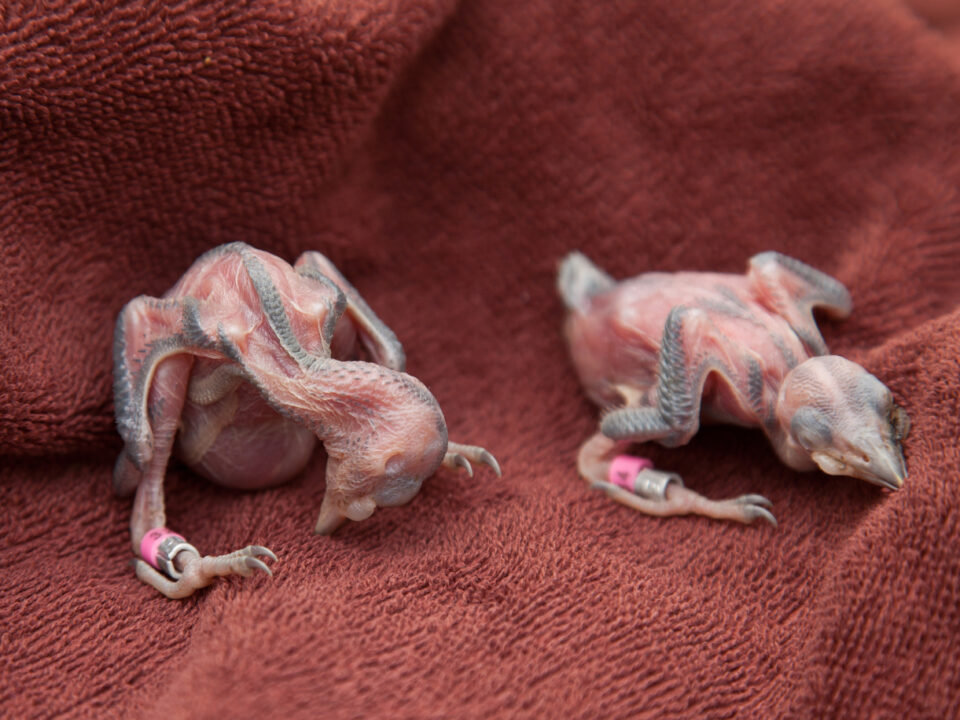Midnight Run: Nightjar Survey to Begin 9th season

Grace Flies East to Albemarle Sound 3/17/2015
March 18, 2015
Camellia Satellite Transmitter Has Been Recovered
March 20, 2015
Nine years ago The Center for Conservation Biology implemented a national survey program intended to close a significant data gap on the health of North America’s nightjar populations. Nightjars are a group of nocturnal species that include nighthawks, whip-poor-wills, common poor-wills, and chuck-will’s-widows, among others. These species had been widely ignored by other national bird survey programs for the simple reason that those programs target species active during daylight. Prior to implementing the nighttime survey focused on nightjars, there was a general belief that nightjar populations were declining based on anecdotal reports and stories shared by many people who now conduct annual surveys.

Common Nighthawk at the Sandhills National Wildlife Refuge in SC. Photo by Doug Deneve.
Over the past nine years, the Nightjar Survey Network has been able to provide information that is critical to the conservation of these species. Some examples include gaining a better understanding of the relationships between nightjar abundance and regional landcover, defining distribution of the Mexican Whip-poor-will in high elevation habitats in Arizona, and providing benchmarks throughout the country to compare population changes into the future. Nightjar survey data collected in Florida will now be implemented into the Florida Breeding Bird Atlas to help bolster their effort to document state-wide occurrences.
Dates for the 2015 survey have recently been chosen. These dates are specifically selected to coincide with the nights of brightest moonlight and greatest Nightjar calling frequency and are standardized to specific regions. Visit the Nightjar Survey Network website to see available routes, survey instructions, and data summary.
Special thanks to all past and returning participants for your years of support and we hope to welcome many new volunteers for the 2015 season.
2015 Survey Dates:
Window 1: 25 April to 11 May, 2015 for low elevation AZ and NM, and FL and TX
Window 2: 25 May to 9 June, 2015 for any location in the country
Window 3: 24 June to 8 July, 2015 for areas north of AZ, FL, NM, and TX and recommended for high elevation areas in the Northern U.S.
Written by Mike Wilson | mdwils@wm.edu | (757) 221-1649
March 19, 2015
Related posts
Adult female from Elkins Chimney territory. Both the female and male were lost from this site between 2024 and 2025 nesting seasons and were not replaced. This territory has been occupied since 1995. Five territories were vacated between 2024 and 2025 along the Delmarva Peninsula in VA. Photo by Bryan Watts



